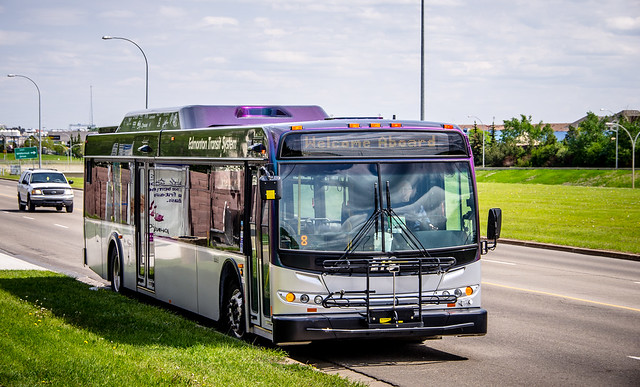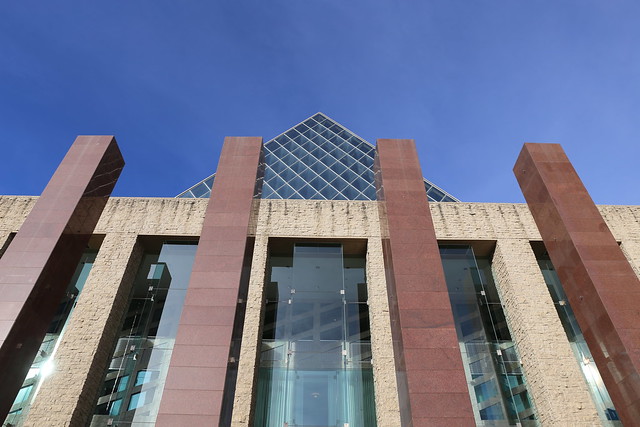This coming week Council is back to Committee meetings. Below are a few highlights from the week’s agendas with links to the reports and more information.
Meetings this week
- October 26 at 9:30am – Community Services Committee Meeting
- October 27 at 9:30am – Executive Committee Meeting
- October 28 at 9:30am – Transportation Committee Meeting
- October 29 at 9:30am – Utility Committee Meeting
You can always see the latest City Council meetings on ShareEdmonton.
Affordable Housing
Executive Committee will be discussing three related reports on Tuesday:
- Safe and Affordable Housing Strategy
- City of Edmonton Affordable Housing Strategy
- Blatchford Housing Strategy
Here is the Edmonton context, according to the first report:
“In Edmonton, an estimated 11,600 social housing units will be affected by expiring operating agreements representing approximately $22 million in federal funding. These units are scattered throughout the city and include seniors self-contained housing, nonprofit housing, continuing co-operative housing, urban native housing, rent supplement housing and community housing. Of the community housing portfolio, the City of Edmonton is the whole or beneficial owner of approximately 3,400 units. The operating agreements for these units will begin to expire in 2022 with the majority ended by 2034.”
The ongoing City Charter negotiations with the Province are expected to address the issue of affordable housing, specifically when it comes to money. On the issue of the budget:
“Assuming that the City continues to participate in funding social housing at the current level, Administration estimates the need for an additional $4.6 million per year for the next 13 years (total of $59.8 million) in order to regenerate all 13 wholly City-owned social housing projects.”
The proposed Affordable Housing Strategy would replace the existing Building Together strategy, and would guide the City’s role in affordable housing for the next ten years (2016-2025). The strategy establishes four goals:
- Increase the supply of affordable housing in all areas of the city.
- Maintain the supply of affordable and market rental housing.
- Enable stable residential tenancies and transition people out of homelessness.
- Anticipate, recognize and coordinate action to respond to housing and homeless needs.
While stating that “municipal governments are best positioned to understand local housing needs,” the report says that “increasing the supply of affordable housing requires dedicated, sustained sources of funding, which must be provided by the other orders of government.”
Once the Affordable Housing Strategy is approved, the City will develop an implementation plan with specific initiatives that would begin early next year.
Council has previously directed that 20% of the housing units in Blatchford be affordable. The report linked above outlines the Principles for Development of Affordable Housing at Blatchford, details the Affordable Housing Allocation, and notes that “the $10 million earmarked for affordable housing from the proceeds of future land sales at Blatchford be used to offset the market value of land to be used for permanent supportive housing in Blatchford.”
River Access Guiding Principles Policy
Recognizing how important the North Saskatchewan River is Edmontonians quality of life, these guiding principles are being developed as “the backbone of a comprehensive river access strategy that will inform future programming, operations and infrastructure improvements that support access to the river and activities associated with the river.”

Edmonton Fall Season, photo by IQRemix
Work began back in 2013 and consultation has identified strong support for the guiding principles. Over the next year, the River Access Strategy and implementation plan will be developed.
“Approval of Policy C586 will ensure that the provision, development and management of river access and river-based activities in the City of Edmonton is responsible, orderly, equitable and environmentally appropriate, while providing opportunities for recreation, education and learning.”
The seven guiding principles are as follows:
- Ensure public access to the river and riverside infrastructure as public domain.
- Value and protect the unique character and environment in the river valley by stewarding, protecting, conserving and restoring the integrity of the river.
- Educate and engage Edmontonians to build lifelong skills, as well as awareness and appreciation of the river and its natural surroundings in order to nurture stewardship of a valued resource.
- Foster collaboration and partnerships so that infrastructure and facilities are shared and programming is coordinated.
- Promote public safety and responsible use to communicate safe water recreation behaviors, emergency response and bylaw enforcement.
- Provide and support a range of river recreation opportunities to enhance Edmonton’s unique quality of life.
- Celebrate the cultural, historical and social role of the river in the city to build awareness and appreciation of the river.
You can read the full strategy here.
Process for New Libraries
This report outlines EPL’s prioritization process for new libraries and its rationale for advancing the preliminary design for the Penny McKee – Abbottsfield Branch. There’s a lot of information here, but I wanted to highlight a few things I learned:
- “The need for a new full service library branch is determined through an analysis of current and projected population in a particular area of the city, along with proximity to other full service library sites.”
- “Planning for a new location generally begins once an area’s population has reached 20,000 and is projected to grow to 30,000 to 35,000 within the next five years, and where there is not another library branch within four to five kilometres.”
- Selected sites must be highly visible, close to or on premium transit routes and roadways, close to current or planned LRT, and be readily accessible to pedestrians.
- EPL “seeks opportunities for co-location of library service points with other municipal services” like recreation centres.
- EPL branches are classified into three sizes: Small (10,000 square feet and under), Medium (over 10,000 up to 18,000 square feet), and Large (25,000 square feet).
The key unfunded capital project priorities over the next 10 years identified in Edmonton Public Library’s 2015-2024 Capital Plan are the following, in descending order of priority:
- Riverbend (existing branch)
- Lewis Estates (will replace West Henday Promenade eplGO)
- Heritage Valley (new branch)
- Woodcroft (existing branch)
- Pilot Sound (new branch)
- Whitemud Crossing (existing branch)
- Castledowns (existing branch)
- Abbottsfield (existing branch)
- Ellerslie (new branch)
There’s a lot of information on the rationale for moving the Abbottsfield branch “to an owned facility in 2022-2024 (design and build timeline).” The current branch is serving the public well and the existing lease doesn’t expire until 2020, but “the importance of a library accessible to a community, particularly one that faces higher than average social issues, is a factor for consideration.”
Transit Fares 2016-2018
Earlier this year, Council decided that transit fares would be set within the multi-year budgeting process. Administration is suggesting that the increase be set at an average of 3% per year. Adult cash fares would therefore be:
- 2015: $3.20
- 2016: $3.25
- 2017: $3.50
- 2018: $3.50
Thankfully they are rounding fares to the nearest 0.25 now to make it easier to pay. Adult monthly pass fares would be:
- 2015: $89.00
- 2016: $91.50
- 2017: $94.25
- 2018: $97.00
You can see the full fee schedule here. There has been no public engagement on these fares yet, not even an online survey.
With the new fares, ETS cost recovery would remain fairly constant between 41% and 42%. Ridership is slated to increase slightly, but rides per capita will decline.
Air Conditioning on ETS Vehicles
Councillor Sohi made a request for information on this topic back in July. The report says that 57 of 94 LRT cars have air conditioning and just two hybrid-buses have air conditioning – the remaining 884 buses have none. In Calgary, they have 150 buses with air conditioning that engages at 24 degrees Celsius. And surprisingly, Winnipeg has 256 buses with air conditioning!

ETS Platinum (6002), photo by Kurt Bauschardt
I don’t think this is worth pursuing, given that we have an average of just 42 days per year with temperatures of 24 degrees Celsius or above, but the report does provide pricing information. The cost to add air conditioning to new buses is $22,500 per bus, and the cost to retrofit is $43,000 per bus. On top of that, if the entire ETS fleet were to be outfitted with air conditioning, it would cost an additional $457,000 per year to operate.
2016-2018 Waste Management & Drainage Services Utility Operating Budgets
The 2016-2018 Waste Management Utility Operating Budget is now ready for Council review:
- 2016: Revenues of $187,952,000 and Expenditures of $189,998,000.
- 2017: Revenues of $199,290,000 and Expenditures of $197,327,000.
- 2018: Revenues of $207,332,000 and Expenditures of $206,461,000.
The 2016-2018 Drainage Services Utility Operating Budget is also ready for Council review:
- 2016: Revenues of $172,890,000 and Expenditures of $133,896,000.
- 2017: Revenues of $181,059,000 and Expenditures of $143,471,000.
- 2018: Revenues of $187,142,000 and Expenditures of $149,920,000.
Council has until October 26 to submit written questions, which Administration will respond to by October 28. Budget deliberations will take place in late November.
Other interesting items
- Council previously approved a herbicide ban and a new report discusses the implications of applying the ban to leased city lands.
- The University of Alberta is continuing to explore the construction of twin arenas on the South Campus lands, and the City is entering into a non-legally-binding MOU with the university to further explore the project.
- There’s a recommendation that the Wildlife Rehabilitation Society of Edmonton receive $60,000 in bridge funding to the end of 2015.
- Edmonton’s Local Immigrant Partnership Council got underway in June and now the City is looking at establishing a Multicultural Advisory Committee as part of the initiative.
- No files have been uploaded for this yet, but there’s an agenda item on registering community leagues as charities for tax purposes.
- Three new BRZ annual reports are available: Kingsway, Beverly, and Chinatown. The latter’s report is surprisingly hostile toward the City!
- A review of the Development Servicing Fees Cost Sharing Arrangement Principles has determined that the current 50% cost recovery and existing principles are appropriate and will be maintained.
- Administration is seeking to enter into a three-year deal worth up to $3.5 million with Postmedia for advertising. The report says explicitly for “print and online advertising services in the Edmonton Journal” but I wonder how the Postmedia acquisition of the Sun plays into this. Would the City still have another separate agreement for the Sun? Over the last three years, the City has spent about $1 million per year on advertising in the Journal.
- If you’re interested in the ongoing debate about bike lanes, you’ll want to check out this report on community engagement.
- Bylaw 17289 will make some changes to speed limits throughout the city.
- An update on the One-Sided Parking Ban Pilot found that it “produced limited benefits” and “was also not strongly supported by residents.” As a result, Administration is not recommending pursuing one-sided parking bans.
- Council will be discussing ways to deal with emerging issues in-between Utility Committee Meetings, which are relatively infrequent.
Wrap-up
You can keep track of City Council on Twitter using the #yegcc hashtag, and you can listen to or watch any Council meeting live online. You can read my previous coverage of the 2013-2017 City Council here.
